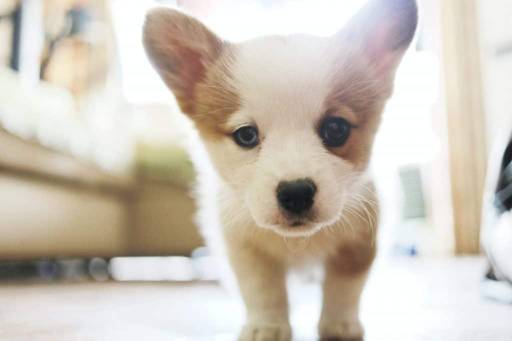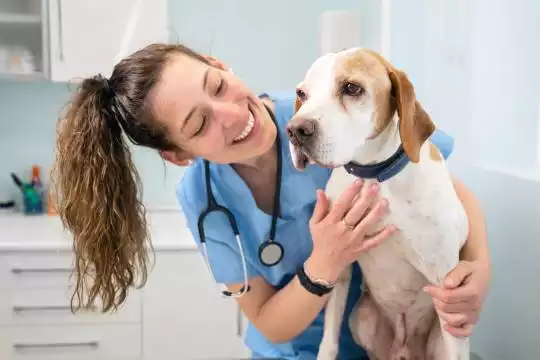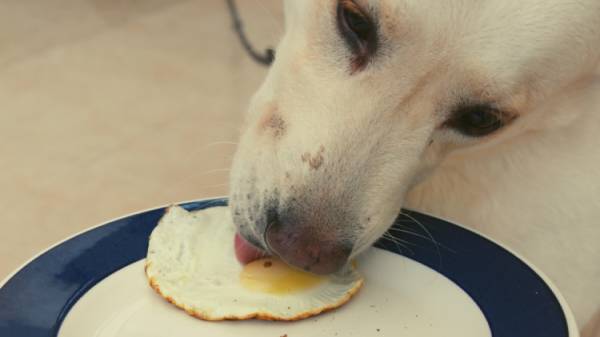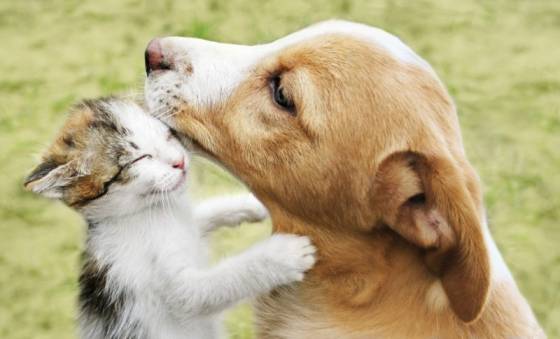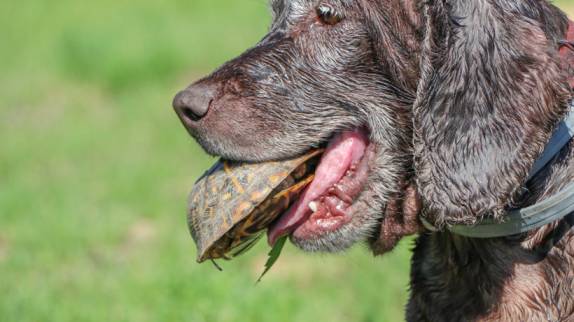Connect with a verified veterinarian in minutes. Licensed vets are available 24/7 to answer your questions. No need to worry about your furry family member.
Puppies are one of the most adorable things in the world! It’s hard not to fall in love right away when you see a puppy’s sweet little face and those huge eyes!
Most people don’t know that when a puppy first opens his eyes, they’re blue! What could be cuter than a small, wriggly puppy with blue eyes?
In this article, we’ll take a look at whether or not a puppy’s eyes stay blue or change, and more! Let’s get started!
Why Do Puppies Have Blue Eyes?
For the first weeks of life, a puppy’s eyes remain closed. Then when he’s about 14 days old, a puppy’s eyes begin to open. When they first open, the puppy’s eyes may be a blue color and look cloudy. Some puppies can have very blue eyes, while others may have eyes that are grayer in color.
The reason the puppy’s eyes are blue in the beginning is that the iris doesn’t contain melanin. But as the puppy grows, his eyes will develop melanin, and the puppy’s eyes may darken to brown or black. However, some dogs do maintain blue eyes throughout their lives.
When Do a Puppy’s Eyes Change Color?
From the time the puppy opens its eyes until he’s about 21 days old, the puppy’s eyes will remain blue or grayish in color. However, after 21 days of age, the eye color will start to change in most dog breeds.
At this point, the puppy’s eyes may begin to turn brown, which is the most common eye color in dogs. As the puppy’s eyes change from blue/gray, you’ll notice the color change is gradual. You won’t see your puppy’s eyes change color overnight!
It can take as long as twelve weeks for this color change to become permanent. Over this time, the puppy’s eye color will gradually change and darken. So, by the age of three or four months, your puppy should have his permanent eye color.
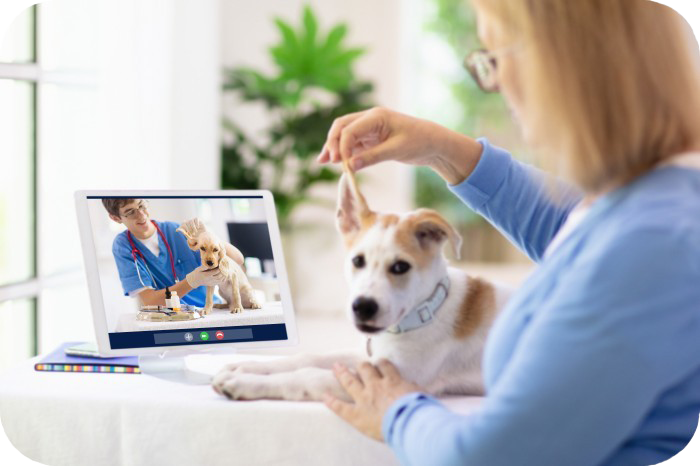
Review symptoms, medications & behavior to keep your pets healthy with a Vet Online in just minutes.
Ask a Vet Live NowDog Breeds with Blue Eyes
There are certain dog breeds with eyes that stay blue throughout the dog’s life. Some dogs have brilliant blue eyes, while others have a more muted bluish tone. It just depends on the dog’s breed and genetics.
Breeds that usually have blue eyes include:
- Weimaraners
- Australian Shepherds
- Siberian Huskies
- Dachshunds
- Border Collies
- Cardigan Welsh Corgis
- Great Danes
- Catahoula Leopard Dogs
- Alaskan Klee Kai (these dogs have brilliant blue eyes!)
- Pit Bulls
- And more
Dogs that have merle coats are also more prone to have blue eyes, such as Border Collies.
Other Eye Colors in Dogs
In addition to blue and brown, dogs may have other eye colors! Some dogs can have hazel eyes, amber, or even dark brown/black eyes. It all depends on the dog’s genes.
For instance, dogs with liver-colored markings tend to have amber eyes. These include Irish Setters and Chocolate Labs. Their eyes may even look yellow or light brown.
Rottweilers have very fiery amber eyes that are very striking against their dark black or grey fur. Wild dogs, too, have eyes that are light brown to gray.
And then there are dogs who may have a brown or gold eye, and the other eye is blue. These are unique, beautiful dogs. This is a condition called heterochromia.
Heterochromia in Puppies
Heterochromia is most common in Huskies, Australian Shepherds, and Border Collies. This condition is not harmful to the dog and is quite normal. A dog with this condition has perfect eyesight.
Puppies can develop heterochromia by inheriting this trait from his parents, or it can be caused by a random genetic mutation. There are different forms of heterochromia, including complete, central, and sectoral.
Complete heterochromia happens in dogs that have one eye that’s a different color from the other. This is the most common form of heterochromia.
Sectoral heterochromia is when the dog’s iris is blue, but the rest of the eye is a different color. On the other hand, central heterochromia is seen as a spike or halo pattern in the iris.
How Can You Tell If Your Puppy Will Have Blue Eyes?
You can tell if your puppy will have blue eyes or not by looking at his parents. Check their eye colors, and you’ll be able to predict your puppy’s eye color. Does your puppy’s mother have blue eyes? Then there’s a chance the puppy will, too? It just depends on the genes of the parents.
How Can You Tell If the Puppy’s Eyes are Having Trouble?
Sometimes when a puppy’s eyes begin to change, you may notice that your puppy may begin rubbing his face against your hand, his crate, or other things. He may also make sniffing noises or lick his paws. If you notice these behaviors when the puppy’s eyes change, then it’s time to see the vet. Your puppy needs to have his eyes examined.
At this stage, your puppy’s cornea and iris also begin to change. If the puppy starts doing the things mentioned above, it can indicate there’s a problem with his eyes. They could be infected, inflamed, or have another problem. Puppies can even develop dry eyes.
You may notice these symptoms if your puppy has eye problems:
- Red eyes
- Swollen eyes
- Itching
- Pawing at his eyes and other things
- Rubbing his eyes on your hands, etc.
- And more
If you notice these symptoms in your puppy, then it’s time to call the vet.
The vet will examine your puppy’s eyes and may also do x-rays or another type of imaging. Once a diagnosis is made, the vet can then treat your puppy for the eye problem he has.
This may be something such as conjunctivitis, which can be caused by allergies or an eye infection. Treatment will depend on the vet’s diagnosis. In most cases, the vet can treat the puppy’s eye problem with prescription medication they can provide.
Be sure to follow the vet’s directions in how to use the medication. This is the best way to help your puppy feel better.
There you have it! Your puppy’s eyes will start out blue and then change as he gets older. However, some puppies will keep their blue eyes for life, while others may have two eyes that are different colors!
No matter what color your puppy’s eyes end up being, we’re pretty sure you’ll love him no matter what!
If you enjoyed this article and you’re a fan of animals just as we are then try out this fun quiz which shows you what animal you would be in case you would be one.
Connect with a verified veterinarian in minutes. Licensed vets are available 24/7 to answer your questions. No need to worry about your furry family member.

Kim
Kim is a talented author, who loves animals especially dogs. She engaged in writing books and articles relating to animals a decade ago. Kim resides in Chicago with her husband and son. The family is the proud owner of a dog and a parrot (Jack and Lily). Kim wanted more than these two pets, but her husband put his foot down... She often visits elementary schools to talk to the kids about what she learned about pets and how they could learn from them.
Review symptoms, medications & behavior to keep your pets healthy with a Vet Online in just minutes.
Ask a Vet Live Now
